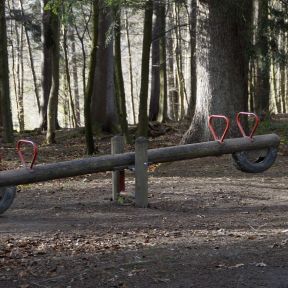Psychologists and therapists have many different ways of looking at the structure of relationships—interlocking attachment styles and childhood wounds, communication skills, and developmental challenges. Another is to look at the balance of power and how each partner supports or doesn’t support the other and the relationship.

Here are 4 common combinations; see which fits you.
1. Two make one.
Anna and Rico each struggle in their own ways. Anna has difficulty holding down a job or relationships with friends because of past trauma, which can quickly trigger her anger and cause damaging blow-ups.
Rico is prone to depression, which affects his productivity at work and his ability to move forward. But by working together, Anna and Rico are a good team: Rico steps up and helps Anna get back on her feet when she has a setback, and Anna does the same when Rico is having a rough time with this depression.
Emotional climate: Despite each doing their best, their everyday lives can be a bit of an emotional rollercoaster, with crises and turmoil occasionally popping up. Sometimes, such couples are isolated and hold onto each other by developing an us-against-the-world stance, but they get through them because of the support they get from the other.
Advantages: Together, they are better able to manage than they each could alone. Though they are propping each other up, the relationship is balanced.
Dangers: Since their relationship and individual success depend on the other, any shifts in the relationship can be catastrophic: Should Rico decide to leave the relationship or Anna emotionally collapse, the delicate balance of the relationship is disrupted. Imagine a scene where they are both leaning on each other; if one pulls away or falls, so does the other.
2. One does the heavy lifting; I’m happy if you’re happy.
Here, Anna manages everyday life fine, but Rico struggles with depression. The imbalance means that Anna does most of the housework because Rico doesn’t have the energy to engage in one-sided conversations to provide emotional support.
Emotional climate: While there are no big crises, the climate of the relationship and Anna’s overall mood ride up and down on Rico’s.
Advantages: Rico gets the support he needs. Because Anna isn’t personally struggling, she is less isolated and can find support through friends and fulfillment through work. And when Rico feels well, they can enjoy each other’s company.
Danger: Anna periodically gets resentful and blows up. But because this rattles Rico, she quickly feels guilty and returns to her old supportive role. Or Anna gets burned out; the heavy lifting is like carrying around a 40-pound backpack. At first, it’s OK; she feels empowered and proud of herself, but over time, the weight takes its toll; she feels she can’t keep doing this; she collapses or leaves. Either way, Rico is left without support.
3. You do you, and I do me.
Anna and Rico are not propping each other up or doing the heavy lifting. Here, the relationship is balanced, with Anna and Rico standing on their own two feet, independent and able to solve their problems.
Can the other be emotionally supportive and listen if one is having a hard day? Sure, but they know that the other person can handle it, and it’s just about applying a bit of TLC.
Emotional climate: No crises or drama and no one feels pulled to rescue the other. Each is managing their own lives; they are equals—what’s not to like?
Advantages: Everyday life is stable; both can be supportive if the other struggles.
Dangers: On the everyday, there are none. But for some couples, this turns into a certain amount of detachment, a roommate-with-benefits scenario, or one in which conversations are either somewhat superficial or focused on work and kids. If they grow too far apart, if one decides they are no longer compatible, they will have a relatively amicable divorce and may even remain friends after.
4. One plus one makes three.
Here, Anna and Rico can each emotionally manage their lives, but there is this thing between them: the relationship itself. This is unlike the previous examples: we struggle together; I’m happy if you’re happy; you do you, and I’ll do me. Both are committed to the relationship itself and make it, not just themselves, a priority.
When the relationship is struggling—feeling too distant or arguing too much—they step up, not to change or fix the other’s problems, but to close and nurture the shared space between them.
Emotional climate: They are nurturing and supportive.
Advantages: Each is taking responsibility for their side of the relationship.
Dangers: None.
Each relationship is unique; couples may move in and out of these variations depending on life events, and all can feel moments of joy and companionship. The problem is only a problem when this isn’t working—when one partner is struggling more or leaves, or is tired of the role and heavy lifting or desires more intimacy. Then, the challenge is transforming the relationship, shifting the power balance to fit the changing reality better. It's time for honest conversations outside support. Where do you stand? Are you satisfied with the state of your relationship? What might you need to change?


